HIStalk Practice Interviews Jonathan Bush, CEO, athenahealth
athenahealth just released online dashboards indicating the performance of its athenaclinical physicians against individual Meaningful Use criteria. Athenahealth CEO Jonathan Bush provided some insights into these measurements and their implications.
![]()
Tell me what the numbers show at this point.
The numbers show things like it is very awkward and difficult for doctors to ask patients about their race or ethnicity when it is not central to their visit, which it rarely is. They show another that it is extremely damaging to patient throughput for a doctor to print a clinical summary and then have to explain what it is to a patient after they have already had their visit. Those are the kinds of things that the dashboards are showing in the small.
In the large, it is showing that there is a very long tail on every well-meaning piece of centrally-administered legislation, much of which, when viewed in the day-to-day reality, seems ridiculous. But I think the fact of the long tail and the size of the investment – certainly more than $44,000 worth of work per doctor – is the big idea that is emerging. That is what we are seeing so far.
I think we are also seeing that it is doable, that it can happen.
For athenaclinical clients in particular, what are you finding they need to be doing differently?
It varies widely from practice to practice. The big aggregate ones that are toughest for us are the race and ethnicity question and the clinical summary question. But with the clinical summary, because we are athena, we can just take that on ourselves because the practice isn’t doing it. We can just add it to the portal and text the patient and say that it is there, or call them on the phone for the practice, and thereby guarantee that they meet that standard. In that example, we are taking it completely out of the practice workflow.
athena is unique for several reasons in this Meaningful Use example. We know in real time whether doctors are meeting the standards or not. That is both a strength and weakness.
It is a weakness because it is easily auditable. Doctors could be called out if attested inappropriately. But it is good because we can see real time and can fix it right away.
Our fix options are really threefold: 1) we can alert the practice as to where they are they are and give them encouragement; 2) we can change the application so that practices don’t need encouragement, it just happens easily; or, 3) we could actually take the work out of the workflow and do it ourselves in the practice’s name.
In the example of race and ethnicity, we can move it in the application upstream to the patient self check-in and hopefully they will capture it there. Or move it out of the exam and into the pre-exam intake step and require the nurse to ask and put a script around it saying we are required by the government to ask you, which would make it easier.
In the example of the clinical summary, we can say screw this, it is too hard because it slows down the checkout process. Let’s send to patient over the website the same day with a lot of explanation online.
It seems like some of the issues are less about product inefficiencies and more about workflow issues. I would think that would be something that crosses over to all EHRs.
That is an interesting point you make. I think that one of the big things being indicated is that differences between the products of the vendors and the process of the buyers are going away. There is a convergence there.
What makers of healthcare information technology in the future are going to need to sell is good process. Whether they use the web or apps or flying trained pigeons is irrelevant to the customer. The customer needs the change in process. They need the process discipline. They need the new information, no matter how the vendor is going to get it there. That is the product. In the future, they are probably not going to get paid until that happens.
How are you measuring the data?
All of our clients, all of the time, are in one living, breathing instance of our application. We have instrumented all the Meaningful Use data into medical records fields that have been instrumented centrally to trigger this central scoring system. Some aspects of athenaclinicals are medical record fields that an individual doctor has decided she wants to manage and capture herself. But the Meaningful Use fields and other financially-wired fields are administered centrally by athena so that we can know when the standards are met.
This is another problem with traditional, isolated software EMR. The fields are not all instrumented such that they can easily connect to reporting so you know how you are doing.
Do you intend to share this information with CMS or others in the Washington crowd?
I want to share it. I think one of the many good intentions behind the HITECH Act was to generate some transparency around the medical office practice — who has process control and who does not — and reward the ones who do. It has been watered down a lot, but that is the underlying intention. I want the folks in Washington to see how much work they have generated with this, to show how they have generated more than $44,000 worth of work by this.
But I also want them to make sure they make it fair, because I represent 30,000 providers that have actually done the work. They are meeting the standards, either through their subscription fees to us or by obeying the pop-ups that athena asks them to do. Either way, our work is theirs because they have paid for it. I want to make sure they get credit. I don’t want anybody who hasn’t met the standard to be able to attest and get the money without doing the work.
That is the second thing I am going to say — show me how you are going to audit this. I want our clients to prepare for audits now. I want to make sure you audit more than your fair share of our clients and I want you to do the audits so you don’t just distress our clients. I want you to audit everyone else so nobody attests without really doing it.
Furthermore, let’s get away from this attestation thing if you are not really going to do thousands of audits. Then I want you to stop attestation as part of this larger trend of making unreasonably and obscene rules with massive penalties for non-compliance, and then not auditing, or auditing in such a random way that it really, really, really hampers innovation and creativity and excitement in the healthcare space.
If you want information: ask for it, be ready to receive it, and then pay for it as it comes out. Don’t say, “I will pay you if you promise me I will receive, it even if I don’t receive it.” It’s like “don’t ask, don’t tell” — it is the most absurd and embarrassing way because you create distance between what a doctor attests to and what is true.
Whereas if you just say the data is provided, here it is. Provide the clinical summaries here. Put them in the data base here. Data storage is here. If you need those clinical summaries, put them here. Let me see what you gave them.
Or race and ethnicity. If it is so important for us to slow down the visit and ask for race and ethnicity, then fine, then ask us what the race and ethnicity mix of our client base. If we don’t give it to you, then don’t pay us. But to say, “I want you to be able to tell, me but I am not going to ask you, but if you don’t tell me if I do ask you — which I won’t — then I’ll put you in jail.” That is a really messed up conversation.
What about Stage 2 Meaningful Use?
The second part of the feedback, for Stage 2 — let’s not do attestation. Whatever you ask for in Stage 2, ask for it and use it. Actually move to trading in this clinical performance information and whatever you can receive and use on your side. Pay for it as it comes out. If you can’t, don’t pay for it. Tell the Teabaggers that you saved some money. But don’t just give it out to everyone, whether they do it or not, and don’t not receive it and use it.
It reminds me a lot of the great federal program to pay farmers to pump their milk out onto the road. You got to be kidding me. That is just such a waste. You are paying thousands of doctors around the country to collect this data that will never be used by anyone. It is so embarrassing.
What do you hope the reaction of other vendors will be?
My fondest wish is for a group, ethically-based mass suicide amongst all our traditional software-based competitors. Barring the mass suicide, I am shooting for a reluctant movement towards their own transparency. What is their answer? I am hoping the Ingas of this world will ask them, “Why can’t you tell me what percentage of your doctors are where on these 20 metrics and how does society gauge you if you can’t?” And let them come up with an answer.
You know, Deloitte will provide a middleware that will allow Allscripts users to know how they are doing against other people. It will be free for your first six months. I don’t know, but some answer where they start to move towards competitive positioning based on outcomes, based on the performance of the use of their application. Right now, it is based on demos and golf outings with CFOs. It is just so dumb.
I am glad you are focused on it and I hope you do ask all the other vendors and get them on the phone and say, “I want to know how you are doing, how you are measuring it.”
It is a very dangerous game when reality and talk start to separate. It is a very slippery slope. Once reality and talk are a little bit separated, it is very easy to get a lot separated. That is when you get with the horrific Medicare audits and terrified people who won’t tell the truth and law firms whose professional advice is to not ask the government if they are compliant with this or that reg so they don’t show up on their radar. These things happen all the time today.
Whereas if attestation in general did not exist, but instead reality existed and reality was paid for, the product was delivered and the product was paid for, a lot more people would be attracted. Entrepreneurs and others would be attracted to healthcare. I do not subscribe to the idea that there should be fewer entities making healthcare IT because they are too many to manage. That is the loopiest idea I have ever heard.

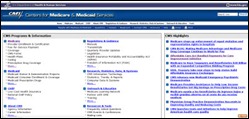












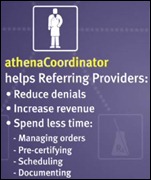


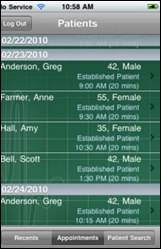

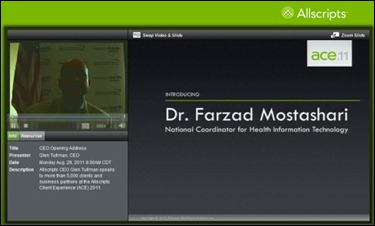


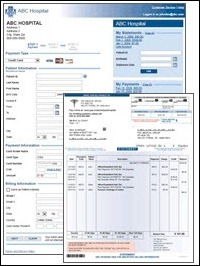
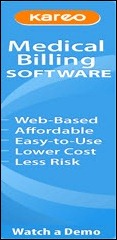
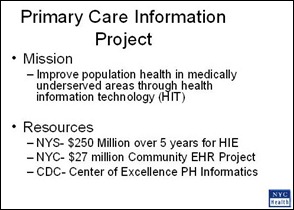



The article about Pediatric Associates in CA has a nugget with a potentially outsized impact: the implication that VFC vaccines…